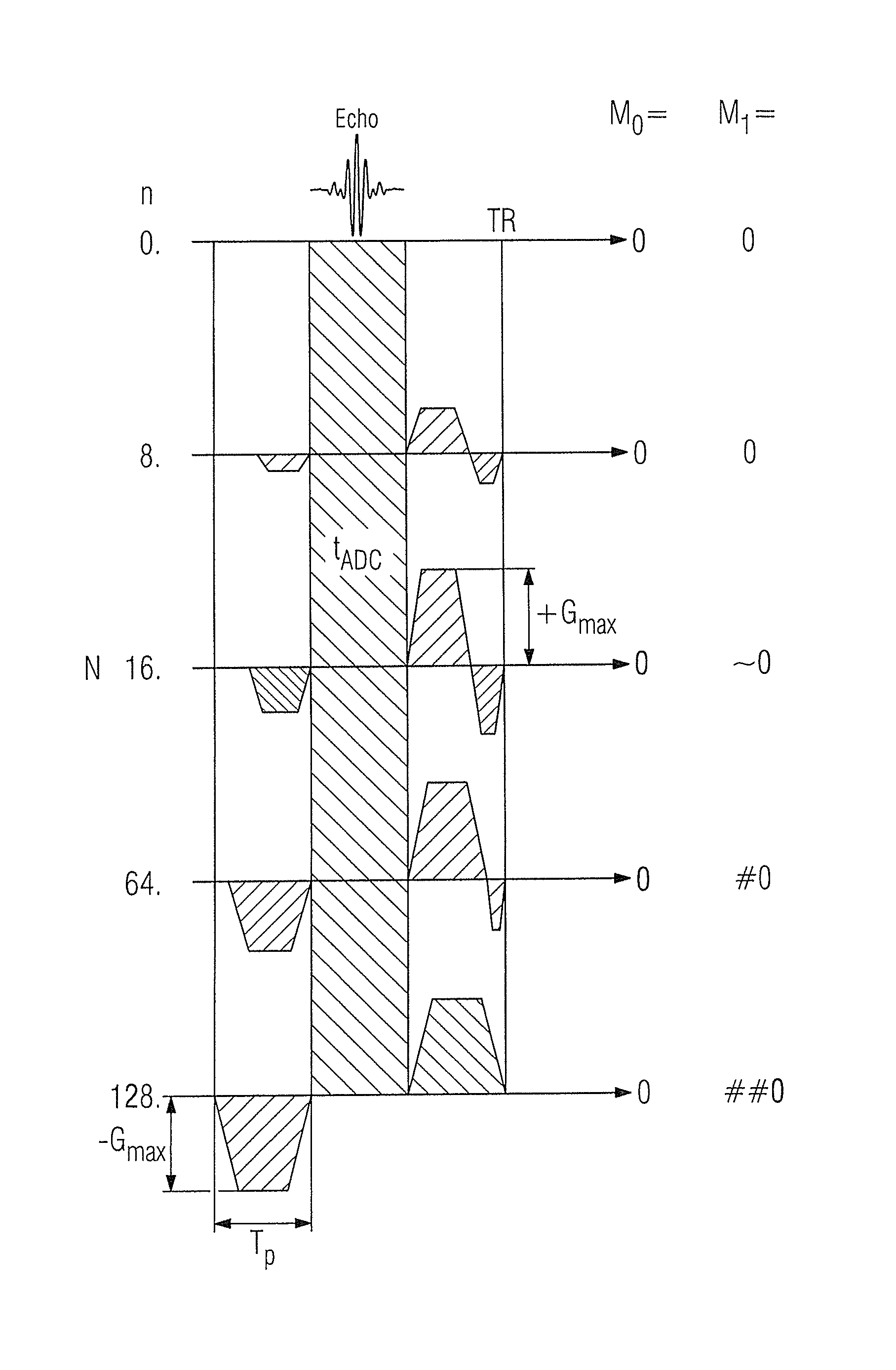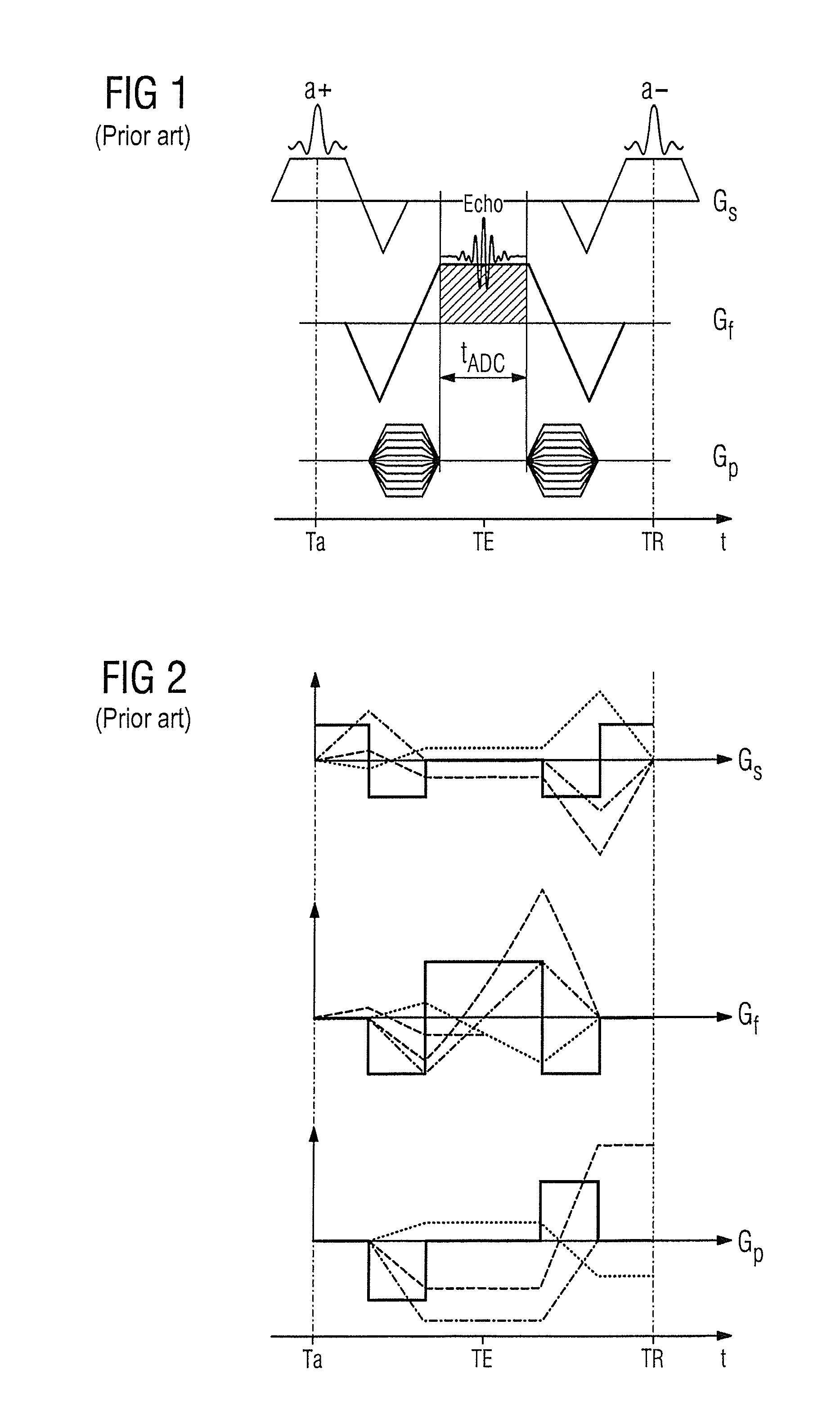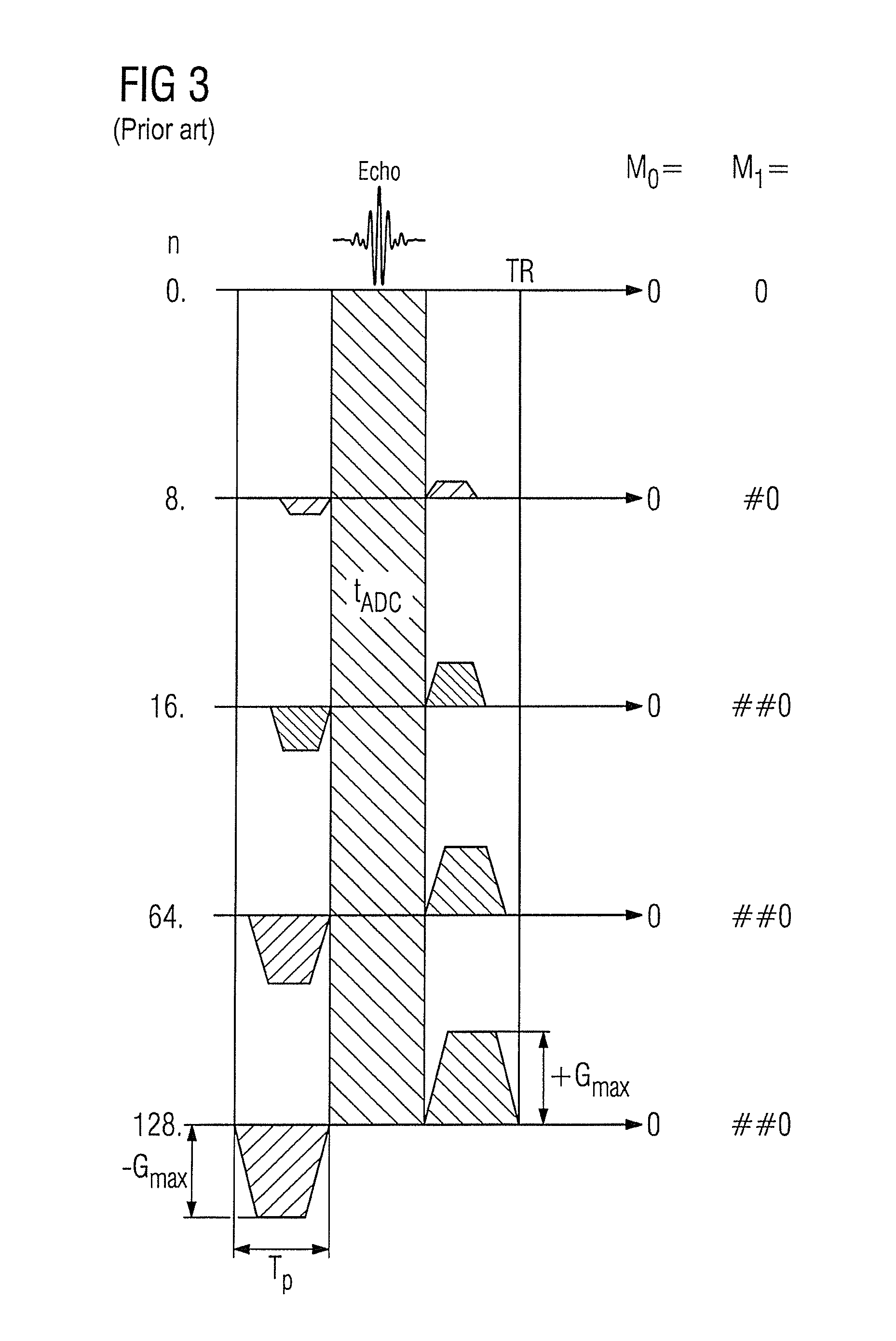Magnetic resonance imaging method, system and computer-readable storage medium
a magnetic resonance imaging and computer-readable technology, applied in the field of magnetic resonance imaging methods, system and computer-readable storage media, can solve the problems of severe image artifacts, prone to artifacts in sequence construction, and “banding artifacts” to achieve the effect of more robustness and no loss in acquisition tim
- Summary
- Abstract
- Description
- Claims
- Application Information
AI Technical Summary
Benefits of technology
Problems solved by technology
Method used
Image
Examples
Embodiment Construction
[0024]FIG. 1 schematically shows a known balanced trueFISP sequence. Time is indicated on the axis from left to right. At a point in time Ta an excitation / refocusing pulse α+ is radiated, wherein a slice selection gradient Gs has already been switched in the slice direction to select a slice to be measured. At a later point in time TE (the echo time) after the excitation / refocusing pulse α+, an echo signal “echo” forms that is read out during the readout time period tADC while a readout gradient Gf is switched in the frequency coding direction. At another later point in time TR that corresponds to double the echo time TE after the excitation / refocusing pulse α+, an excitation / refocusing pulse α− is radiated again, with a phase coding gradient Gp being activated between the excitation / refocusing pulse α+ and the excitation / refocusing pulse α− in order to complete the spatial coding. During the course of such a trueFISP sequence, alternating excitation / refocusing pulse α+ and α− are r...
PUM
 Login to View More
Login to View More Abstract
Description
Claims
Application Information
 Login to View More
Login to View More - R&D
- Intellectual Property
- Life Sciences
- Materials
- Tech Scout
- Unparalleled Data Quality
- Higher Quality Content
- 60% Fewer Hallucinations
Browse by: Latest US Patents, China's latest patents, Technical Efficacy Thesaurus, Application Domain, Technology Topic, Popular Technical Reports.
© 2025 PatSnap. All rights reserved.Legal|Privacy policy|Modern Slavery Act Transparency Statement|Sitemap|About US| Contact US: help@patsnap.com



